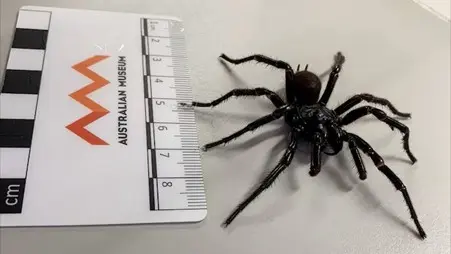Australia, already infamous for its unique and often fear-inducing wildlife, has once again captured global attention with the discovery of a new spider species nicknamed “Big Boy.” This eight-legged giant is stirring curiosity and unease among arachnologists and enthusiasts alike, cementing Australia’s reputation as the land of extraordinary and sometimes terrifying creatures.
Discovery of Big Boy
Big Boy was discovered during a biodiversity survey in a remote forest region of Queensland. The spider, belonging to the genus Atrax, is a close relative of the Sydney funnel-web spider (Atrax robustus), one of the world’s most venomous arachnids. However, Big Boy is not just notable for its size, which is significantly larger than most members of its genus, but also for its distinct behavior and ecological role.
Dr. Emily Carter, the lead researcher on the team that discovered Big Boy, described it as “a remarkable find that adds to our understanding of arachnid diversity in Australia.” She emphasized that the spider’s characteristics make it both fascinating and an important subject for further study.

Physical Characteristics
Big Boy is aptly named for its impressive size, with a body length of up to 5 centimeters and a leg span that can exceed 15 centimeters. Its robust body is covered in a glossy, dark exoskeleton, and it sports powerful fangs capable of delivering a potent venom. Initial observations suggest that Big Boy’s venom composition is unique, with potential medical and scientific applications.
Venom and Potential Risks
Although Big Boy’s venom is highly potent, there is no evidence yet to suggest it poses a significant threat to humans. The spider is reclusive and prefers to dwell in burrows, emerging only during the night to hunt small insects and other arthropods.
“Big Boy’s venom has a complex mixture of neurotoxins that could have applications in the development of new medications,” Dr. Carter explained. “However, it’s still crucial to exercise caution and respect when encountering wildlife in their natural habitats.”
Ecological Importance
Despite its fearsome reputation, Big Boy plays a vital role in maintaining ecological balance. As a predator, it helps control populations of smaller arthropods, preventing potential infestations and supporting biodiversity. Researchers also believe that studying Big Boy’s interactions within its ecosystem could offer insights into the health of Australia’s forest environments.
Conservation Efforts
Like many newly discovered species, Big Boy faces threats from habitat loss and climate change. The researchers are advocating for conservation measures to protect its habitat and ensure the survival of this remarkable species.
“Understanding and preserving Big Boy’s habitat is critical not just for its survival, but for the larger ecosystem it supports,” said Dr. Carter.
Public Fascination and Education
The discovery of Big Boy has sparked significant interest from the public and scientific communities. Museums and wildlife organizations are already planning exhibits and educational programs to raise awareness about the species and its ecological role.
“It’s important to shift the narrative from fear to fascination,” Dr. Carter noted. “Spiders like Big Boy are not just venomous critters; they are key players in our ecosystems and hold untapped scientific potential.”
Conclusion
Big Boy may be intimidating at first glance, but its discovery highlights the incredible biodiversity that Australia continues to offer the world. As researchers delve deeper into its biology and behavior, this spider could unlock new scientific discoveries and inspire greater efforts to protect Australia’s unique wildlife. For now, Big Boy serves as a reminder of the wonders and mysteries that still lie hidden in nature.
Correspondence - Alka Mankani